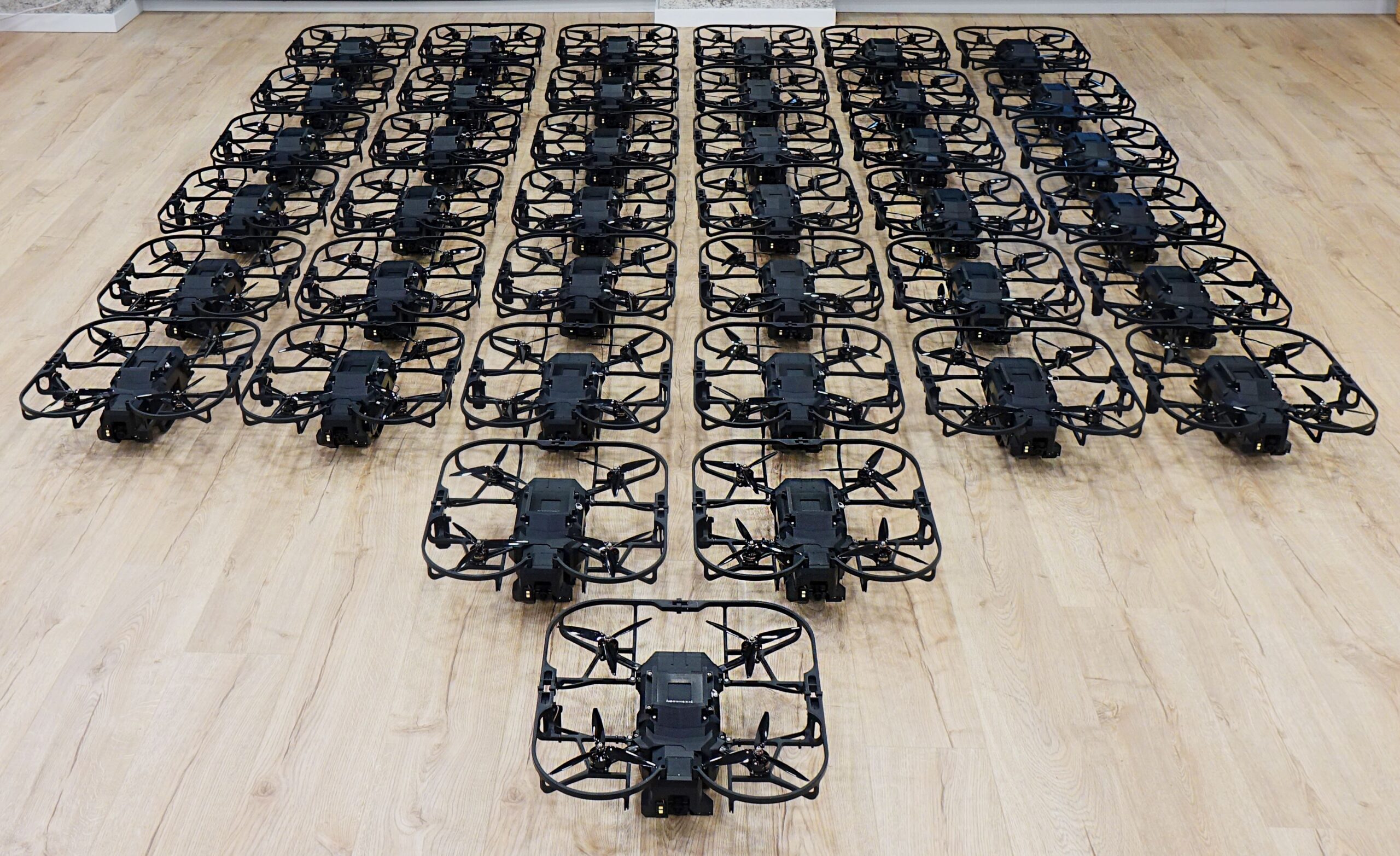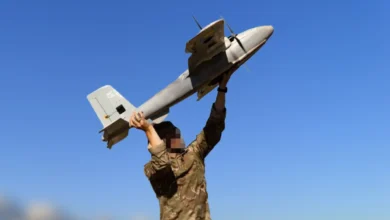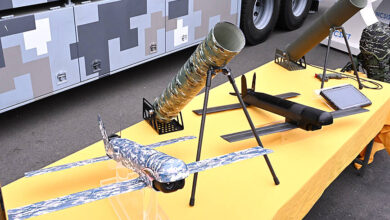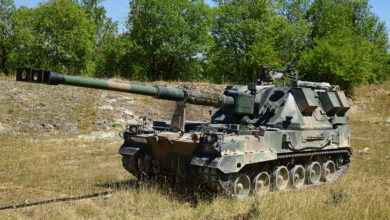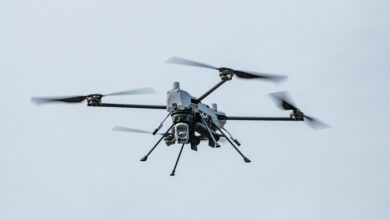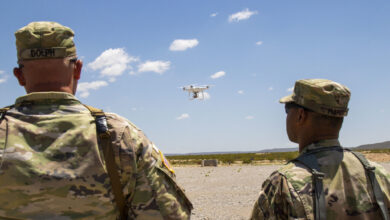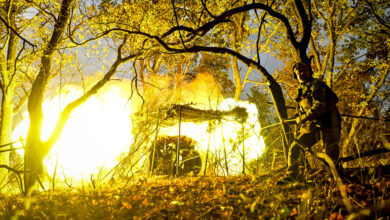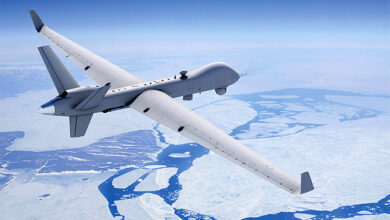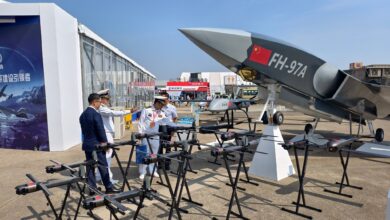How XTEND’s AI-Powered Drones Are Saving Lives on the Frontline
With its US-made AI-assisted drone and robotics technology, XTEND is providing a scalable solution for both production and training.
In the realm of urban warfare, the most dangerous task is leading the charge — going in first. Battlefield-tested, tactical drone company XTEND aims to take on this critical role, saving lives while eliminating the steep learning curve associated with flying drones.
From Ukraine to the Middle East, drone warfare is on the rise and is expected to escalate in the coming years. A key challenge in this domain is rapidly and effectively training soldiers to operate drones on the battlefield.
XTEND is tackling this issue with its US-made AI-assisted drone and robotics technology, providing a scalable solution for both production and training.
While countries like Iran and Turkey are exporting larger, military-grade drones used by Ukraine and Russia, China has been the primary source of cheap consumer drones that are being increasingly used on the frontlines. XTEND’s mission is to fill the gap by enhancing remote operators’ combat impact with cost-effective, AI-assisted tactical drones.
The Defense Post talked to Aviv Shapira, co-founder and CEO of XTEND, and its CCO Gal Nir to hear how their operating system revolutionizes drone warfare with an intuitive interface for remote missions and multi-mission robots.
Shapira’s vision was originally shaped by two distinct worlds: the immersive world of virtual reality and the fast-paced realm of drone racing. The origin of XTEND began with a unique collision of these two roles.

Shapira’s journey started with Replay, a company he co-founded that revolutionized the way sports could be experienced. Replay’s technology allowed users to reconstruct real-time games in 3D space, giving viewers the ability to teleport themselves into the heart of the action and watch from any perspective.
This groundbreaking concept of personalized game content won two Emmy Awards and caught the attention of Intel, which acquired Replay for close to $200 million, rebranding it as Intel Sports.
In the meantime, Shapira was introduced to the exhilarating yet incredibly challenging world of drone racing where he met his future co-founder, Rubi Liani, founder of the league.
He discovered first-hand the difficulty of mastering the high-speed, precise movements required to fly drones with virtual reality goggles at speeds of up to 150 kilometers (93 miles) per hour.
After months of effort and thousands of dollars spent on broken drones, Shapira and Liani realized there was a significant skills gap in operating drones effectively.
This realization became the cornerstone of XTEND’s mission. Shapira and his team set out to close this skills gap by developing the XTEND Operating System (XOS), an AI-driven interface that makes flying drones as intuitive as playing a video game.
The result? Pilots, even if they have no prior experience, can master drone operations in as little as five minutes, thus reducing training time by 99 percent.
It’s this transformative ease of use that drives XTEND’s mission: to make complex drone operations accessible to everyone, saving lives and enhancing mission outcomes in real-world scenarios where every second counts.
A pivotal moment in the company’s history occurred in 2019. As tensions escalated along Israel’s southern border, Hamas began sending booby-trapped kites and balloons toward Israel.
These low-tech but dangerous weapons posed a significant challenge for the Israeli Defense Forces (IDF), as they were difficult to detect and intercept using traditional defense methods.
Shapira recalls how XTEND’s drones quickly pivoted to a life-saving mission. “We took our drones from the gaming world and started intercepting these kites and balloons,” he said.
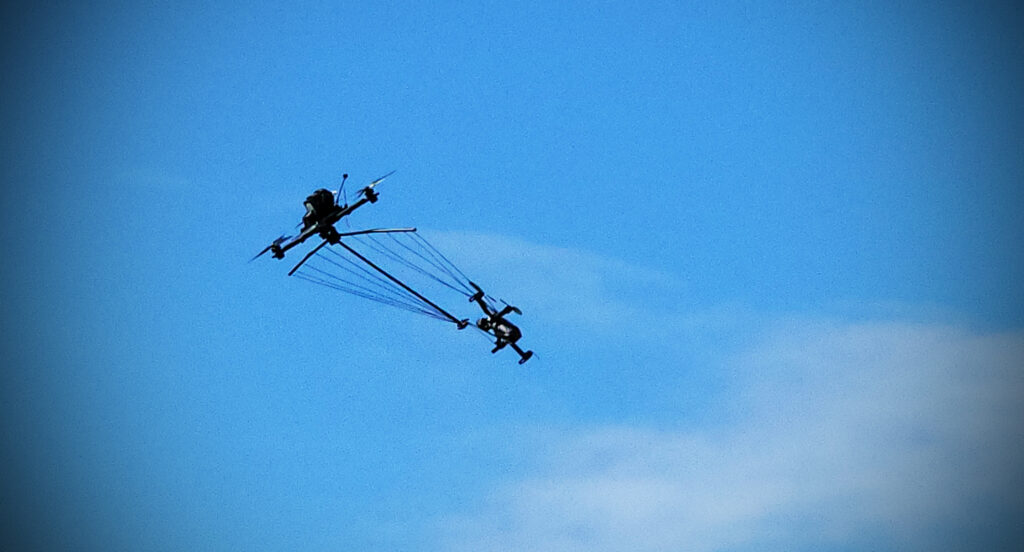
That mission was a turning point for XTEND. As Shapira explained, “You have your gaming business, and suddenly you become a defense company.” The success of their kites-and-balloons interception led to collaboration with the IDF and then the US Department of Defense.
XTEND was invited to work with the US Defense Threat Reduction Agency, developing fast-flying drones to neutralize enemy drones in the sky — marking the company’s formal entry into the defense sector.
XTEND has since grown into a leader in tactical robotics, with more than 3,000 real-world life-saving interceptions with the IDF, particularly in missions requiring AI-driven autonomy with human discretion.
XOS allows operators to control multiple drones with ease, executing complex urban and battlefield missions. “Today, XTEND is one of the leading companies in tactical robotics,” Shapira explained.
XTEND’s US and Israeli-made drones now operate in teams — indoor inspection drones, outdoor pick-and-drop drones, and loitering munition drones — each playing a crucial role in coordinated missions.
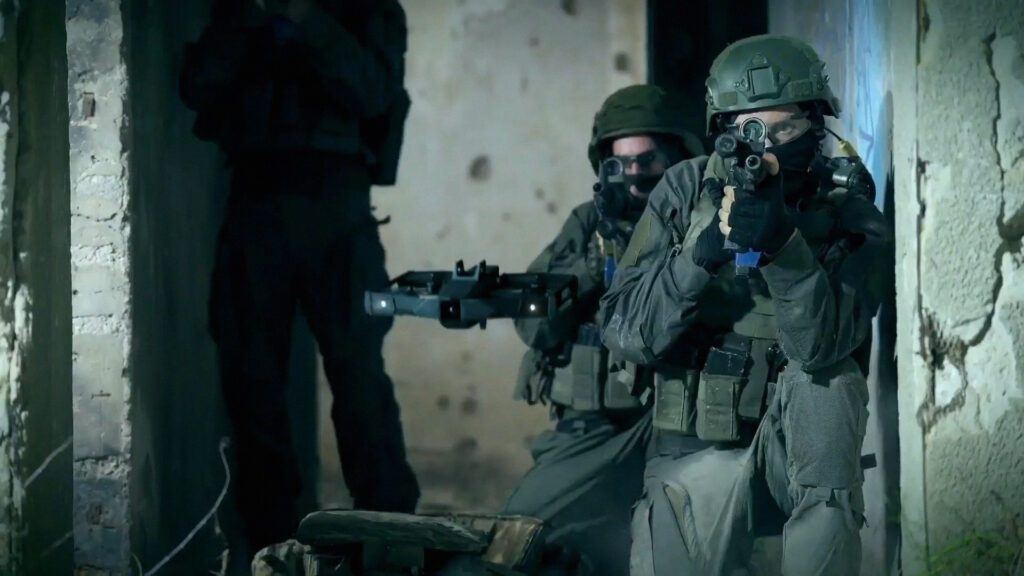 Shapira said that XTEND is not a weapons company, but their drones can be equipped with what he calls “multi-mission capabilities” through the use of payloads. While XTEND drones can carry munitions, that’s just one of many options.
Shapira said that XTEND is not a weapons company, but their drones can be equipped with what he calls “multi-mission capabilities” through the use of payloads. While XTEND drones can carry munitions, that’s just one of many options.
“We can carry a robotic arm, a speaker, a Wi-Fi extender, a recognition device,” Shapira added, emphasizing the versatility of their platform.
XTEND’s focus is on selling a robust, AI-driven operating system that supports various payloads, not the weapons themselves. “Some of the platforms utilizing XOS aren’t even ours,” Shapira noted, referring to examples from Gaza, where robot dogs are deployed for missions using XTEND’s technology.
Many companies use AI as a buzzword, but not at XTEND. “We integrate AI seamlessly across all our drones and robots, empowering autonomous missions and enhancing operational efficiency in real-time,” Shapira said.
XTEND’s Cutting-Edge Technology Takes Drones Beyond the Battlefield
“Our operating system serves both defense and non-defense purposes,” Shapira said. XTEND’s drones are not limited to military missions; they play a critical role in industrial inspection and humanitarian efforts as well.
For instance, during the devastating earthquake in southern Turkey last year, XTEND dispatched a team to train the locals to use drones to navigate collapsed buildings in search of survivors.
“Our drones flew through incredibly complex environments,” Shapira recalled, detailing how their technology, equipped with human recognition capabilities, helped locate a 60-year-old woman trapped beneath the rubble. This mission exemplified the life-saving potential of their drones beyond defense applications.
XTEND’s technology also supports industrial inspections, particularly in Asia, including in Singapore and Malaysia. “We use the same drones to detect leaks, rust, and cracks in industrial structures,” Shapira said. He highlighted the time-saving benefits: “Instead of deploying a team of scuba divers to inspect structures beneath jetties, our drones do the job — safer, faster, and more efficiently.”
This dual-use technology bridges the gap between defense and non-defense applications. Shapira pointed out that the same drones used for search and rescue missions in Turkey are employed by armed forces across the world, as well as industrial teams across Asia. “It’s the same exact product, just used in different contexts,” he said.
XTEND’s versatile technology showcases how cutting-edge robotics can transcend industries, from saving lives to improving industrial processes.
 Shapira explained how XTEND’s technology pushes the boundaries of drone operations with remarkable ease and flexibility. “XOS essentially transforms our drones into flying toolkits,” he said, emphasizing their versatility.
Shapira explained how XTEND’s technology pushes the boundaries of drone operations with remarkable ease and flexibility. “XOS essentially transforms our drones into flying toolkits,” he said, emphasizing their versatility.
The drones are equipped with payloads like robotic arms, which can pick up and drop different objects based on the mission requirements. But that’s just the start.
Shapira recalled a moment that highlights XTEND’s global capabilities — a demonstration in Japan where drones flew in Israel, 9,000 kilometers (5,592 miles) away.
“The biggest challenge with operating drones over such distances is latency. Normally, when you give a drone a command, it takes about four to five seconds for the drone to respond. So manual control becomes impossible,” he explained.
Instead of trying to fly a drone directly through a window in real-time, XTEND has solved the problem by creating what they call a “metaverse interface.” In this virtual environment, the operator controls a digital drone, giving it precise mission commands. The real drone then carries out the mission, latency-free, and the operator can be miles away.
Following the success of this minimum viable product, XTEND launched a spinoff called ANYWHERE to tackle the biggest challenge in robotics: the reliance on human labor.
With over 70 percent of the drone economy spent on manual operations, scalability remains limited. ANYWHERE is a software company developing cutting-edge tools for remote operation of drones and robots, integrating AI applications to boost autonomy and reduce the need for human involvement.
Training in Minutes: XTEND’s Revolutionary Approach to Drone Piloting
This innovation opens up enormous possibilities. “It doesn’t matter how far away you are, whether in Japan or anywhere else, because you’re flying the drone on your laptop. The real drone follows your intention and completes the mission,” Shapira explained.
This system allows anyone, with as little as 30 seconds of practice, to become a drone pilot—making drone operations accessible and scalable. “You can fly our drones and robots from anywhere in the world.”
What’s even more remarkable is how quickly someone can learn to operate these complex systems. Shapira shared an eye-opening comparison: “Typically, flying a drone in challenging environments like those in Ukraine, where tanks are involved, takes a pro pilot about a month to master. With our system, it takes just 30 minutes. It’s an extreme leap, but that’s the advantage of how we’ve redefined controlling robots.”
XTEND has established flight schools in Israel, Singapore, and the US, where operators receive hands-on training to control swarms of drones and ground robots, working together seamlessly after just one day of instruction.
These systems allow for intricate missions, like clearing buildings or navigating complex environments. “You fly a mix of outdoor drones, indoor drones, and ground robots as a team,” Shapira said, highlighting how easy it is to operate this multi-mission technology.
 To further enhance the experience, XTEND has created what Shapira referred to as “an App Store,” a software development kit that allows users to build their own applications for the drones.
To further enhance the experience, XTEND has created what Shapira referred to as “an App Store,” a software development kit that allows users to build their own applications for the drones.
“This means that while you’re flying, you can run different applications on the system,” he explained. It’s this flexibility and innovation, driven by software, that Shapira believes represents the next evolution of drone operations.
“We’ve all seen what’s happening in Ukraine over the past two years, where drones have come to dominate the battlefield,” he said. The shift is stark: a $500 drone can take out a multimillion-dollar tank, disrupting traditional military economics.
“…[So] the financial calculus of war is changing drastically,” he noted, emphasizing how cost-effective technology like drones are rewriting the rules of engagement. Ukraine is losing around 10,000 drones a month in the war, according to a Royal United Services Institute estimate.
But the transformation goes beyond the expenses. The soldiers of today are different from those who fought wars 50 years ago.
“People today are more cautious about running headfirst into battle — not because they lack patriotism, but because they understand there are smarter ways to win a war,” Shapira explained.
Drones and robots have emerged as critical tools in modern warfare, offering what he calls “stand-off technology.” By remotely controlling the battlefield with drones and robots, armies can dominate from a distance without putting soldiers directly in harm’s way.
Leading the World in Ground Proximity Robotics
XTEND’s role in this technological shift is crucial. “We are probably the leading company when it comes to ground proximity robotics,” Shapira said.
While many companies specialize in long-range drone strikes, XTEND excels in replacing soldiers in close-quarter combat scenarios. “When you need to inspect or breach a building, that’s where our technology shines. If you need to clear mines from a road before a tank or a troop passes through, you’d use our counter-IED technology.”
XTEND is creating safer, stand-off situations for soldiers, allowing them to perform the most dangerous missions without risking their lives.
Shapira showed a video where XTEND’s drone inspected and detonated a door to create a safe passage. “It places a charge on a door, then the drone flies inside the building,” Shapira described. “Just imagine how many lives could have been saved if this kind of technology was used globally.”

Gal Nir jumped in to highlight the essence of XTEND’s technology and what sets XTEND apart, emphasizing that the heart of the company’s innovation is the operating system and the software that powers their drones.
“It’s all about the technology,” he said. “Hundreds, if not thousands, of manufacturers can build drones, but the real magic lies in our core XOS technology that makes it easy to fly and operate drones.”
XTEND’s system allows operators to master the drones quickly, with minimal training, so they can focus on the mission instead of the complexities of flying.
Adapting to War: XTEND’s Agile Drone Technology for Dynamic Battlefields
What makes XTEND truly special is the open architecture of both the software and hardware. “This flexibility allows us to integrate AI capabilities, software functions, and various payloads — from vision and communication to ammunition,” Nir explained.
The result is a powerful system where a single user or small team can operate multiple drones simultaneously, performing complex tasks like surveillance, reconnaissance, target acquisition, and even targeting itself.
The magic, Nir believes, lies in this integration. “You have an entire drone team, indoor and outdoor drones, all running on the same operating system. Once a user is trained to operate one drone, they can operate them all.”
This uniformity not only streamlines operations but also opens up enormous commercial opportunities. XTEND can help countries build nationwide training centers and infrastructure based on this core technology.
 “Our system allows nations to operate drones tailored to their specific needs,” Nir added. The beauty of this system is that countries don’t need to disclose their missions or objectives. They can leverage XTEND’s core technology to train personnel, simulate missions, and scale up drone operations for their air force, navy, and army.
“Our system allows nations to operate drones tailored to their specific needs,” Nir added. The beauty of this system is that countries don’t need to disclose their missions or objectives. They can leverage XTEND’s core technology to train personnel, simulate missions, and scale up drone operations for their air force, navy, and army.
This modular approach makes XTEND’s technology the backbone of future military drone infrastructure, empowering nations to perform complex missions with unparalleled efficiency.
Customizable and Adaptable: How XTEND’s Drones Handle Changing Combat Environments
Shapira added an important distinction about XTEND’s approach: “If you look at companies like DJI, Skydio, and others, they’re driven by products — great drones that perform specific tasks very well. But if something in their environment changes, they can fail.”
Shapira shared a relevant example, recalling when Skydio came to Israel to support the IDF during the war by providing free drones. He noted that the IDF said they were grateful, but they had to decline. “Their drones operate on frequencies we couldn’t use and were not compatible with IDF C2 systems,” he explained. This limitation highlighted the advantage of XTEND’s software-driven approach.
Unlike product-based drones, XTEND’s drones and robots are adaptable because they are controlled by software.
“We can easily modify them,” Shapira said. “Just in the last six months, we released around 160 service packs — new software versions — because the IDF requested specific changes. Every time one of our drones takes off, it’s different. It has new applications, new mission capabilities.”
Balancing Quality and Cost: The Challenge of Building NDAA-Compliant Drones
Shapira acknowledged the cost challenges that come with XTEND’s commitment to using NDAA-compliant US-made parts, which means no Chinese or Russian components.
However, he emphasizes that XTEND’s scale and manufacturing operations in Israel and the US helps mitigate these costs. “We’re currently building about 150 drones a week, which allows us to reduce the overall price. This high production volume makes manufacturing more cost-effective.”
Shapira added that the company is the largest drone company in Israel and ranks among the top three in the world — excluding Chinese manufacturers. “This scale creates value for our customers because they’re getting a much more mature, battle-tested product for a competitive price,” he explained.
Nir built on this point, highlighting the value XTEND offers in terms of capabilities and cost-effectiveness.
“When you look at the entire range we provide and the operational scenarios we enable, it’s clear that our solutions bring exceptional value,” Nir said. He pointed out that XTEND drones support a wide range of missions, from force protection and border security to strategic site protection and even loitering munitions for strikes.
“Few companies can offer this kind of complete package for such a reasonable cost,” Nir adds. “Our solutions don’t just deliver advanced capabilities—they offer real value for money in terms of training retention, versatility, and operational effectiveness.”
During the AUSA Annual Meeting and Exposition in Washington DC from October 14-16, XTEND will be exhibiting at Hall ABC, Booth #3251.

